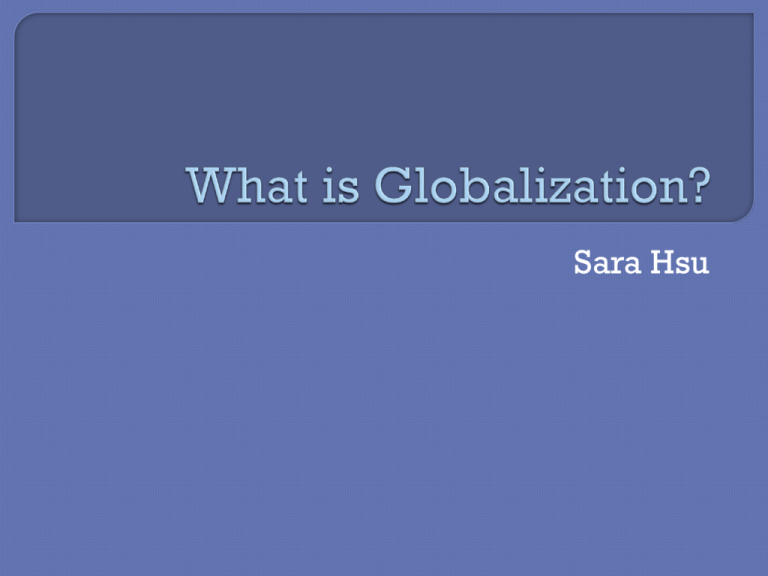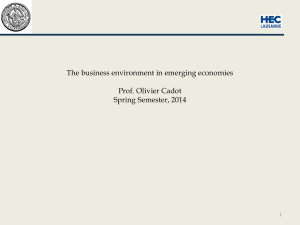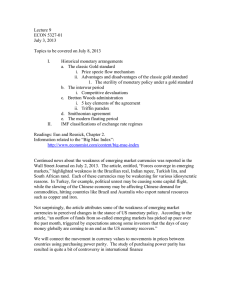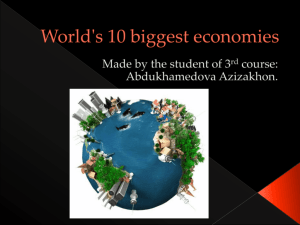Week 1 What is Globalization
advertisement

Sara Hsu What is Globalization? A parable. It has been said that arguing against globalization is like arguing against the laws of gravity. ― Kofi Annan I find that the world is changing much, much faster than I can even bitch about it. ― Bill Maher Thomas Friedman: “The simple definition of globalization is the interweaving of markets, technology, information systems, and telecommunications networks in a way that is shrinking the world from a size medium to a size small. It began decades ago, but accelerated dramatically over the past 10 years, as the price of computing power fell and the world became an ever-more densely interconnected place. “ Mercantilism dominated Western European economic policy in the 16th and 18th century and was the belief that government control of foreign trade is of paramount importance for ensuring the prosperity and military security of the state. Adam Smith, one of the first economists and a classical economist, was a proponent of globalization. Smith rejected mercantilism, arguing that government involvement in trade is unnecessary, and that free trade is inherently beneficial. Smith’s writings profoundly influenced the globalization process. Capital: Cash or goods used to generate income either by investing in a business; components of infrastructure Industrialization: The development of industry on an extensive scale. Exports: A commodity, article, or service sold abroad. Imports: A commodity, article, or service brought in from abroad for sale. Poverty: The state of being extremely poor. Inequality: Economic inequality (or "wealth and income differences") comprises all disparities in the distribution of economic assets and income. Demographic Change: Measurable shift in the characteristics of a geographicallydefined population. Development: The process of raising the level of prosperity and material living in a society through increasing the productivity and efficiency of its economy. China: the world's second largest economy by nominal GDP and by purchasing power parity after the United States. It is the world's fastest-growing major economy, the largest exporter, and second largest importer of goods in the world. Taiwan: a developed capitalist economy that ranks as the 19th largest in the world by purchasing power parity. India: the economy is the eleventh largest in the world by nominal GDP and the third largest by purchasing power parity (PPP). The country is one of the G-20 major economies and a member of BRICS. In 2011, the country's per capita income stood at $3,694 IMF, 129th in the world, thus making a lowermiddle income economy. Japan: The economy of Japan is the third largest in the world after the United States and the People's Republic of China and is the world's second largest developed economy. Thailand: a newly industrialized economy. It is a heavily export-dependent economy, with exports accounting for more than two thirds of gross domestic product (GDP). South Korea: a market economy which ranks 15th in the world by nominal GDP and 12th by purchasing power parity (PPP), identifying it as one of the G-20 major economies. It is a highincome developed country, with a developed market, and is a member of OECD. Malaysia: a growing and relatively open state-oriented and newly industrialised market economy. Philippines: the 46th largest in the world, according to 2010 World Bank statistics. Singapore: a highly developed capitalist mixed economy; the state owns stakes in firms that comprise perhaps 60% of the GDP. Syllabus Questions?







